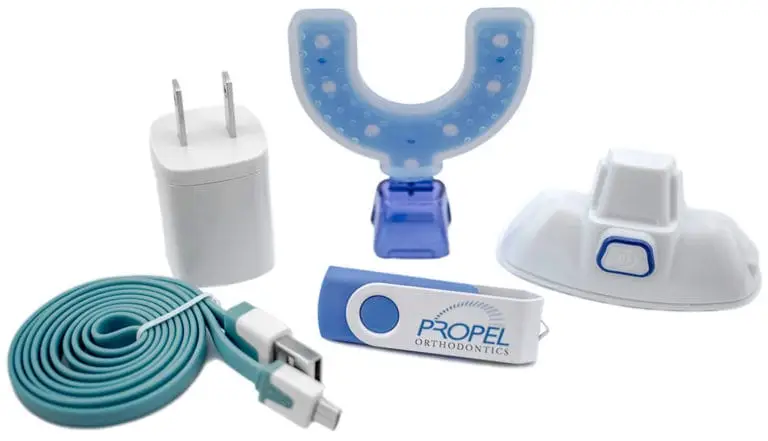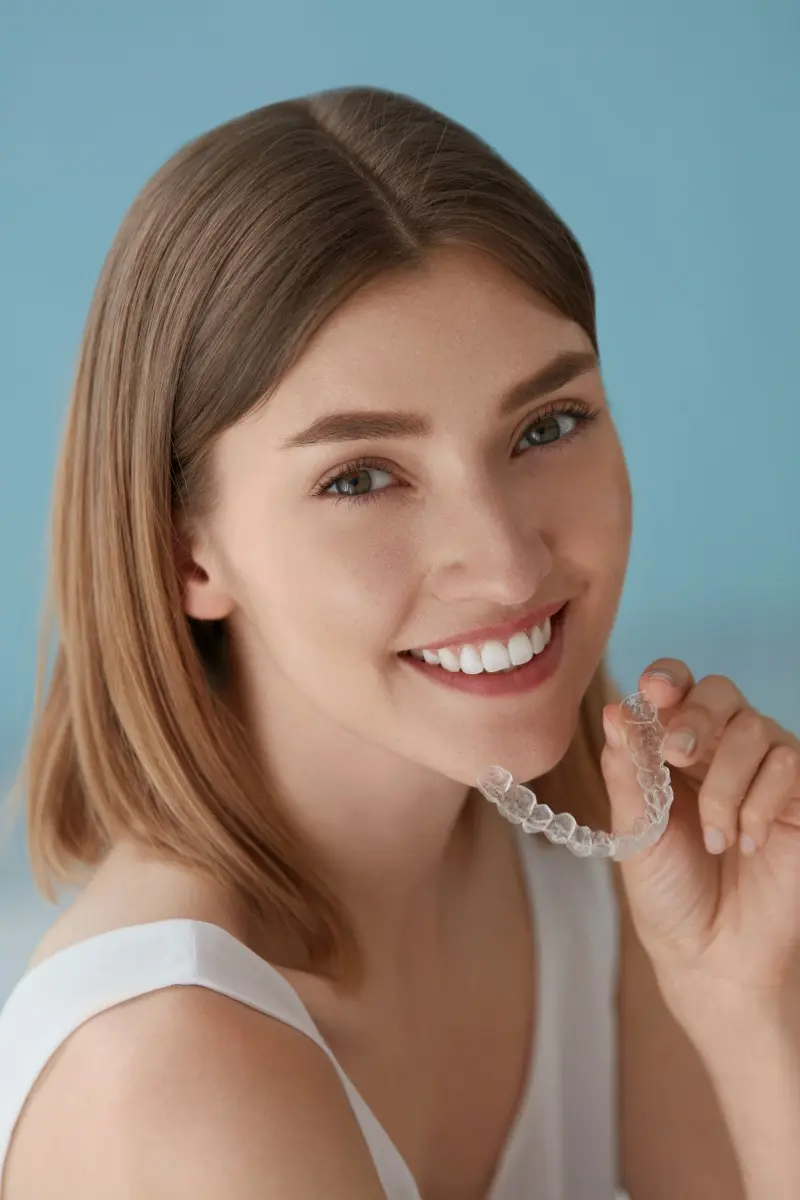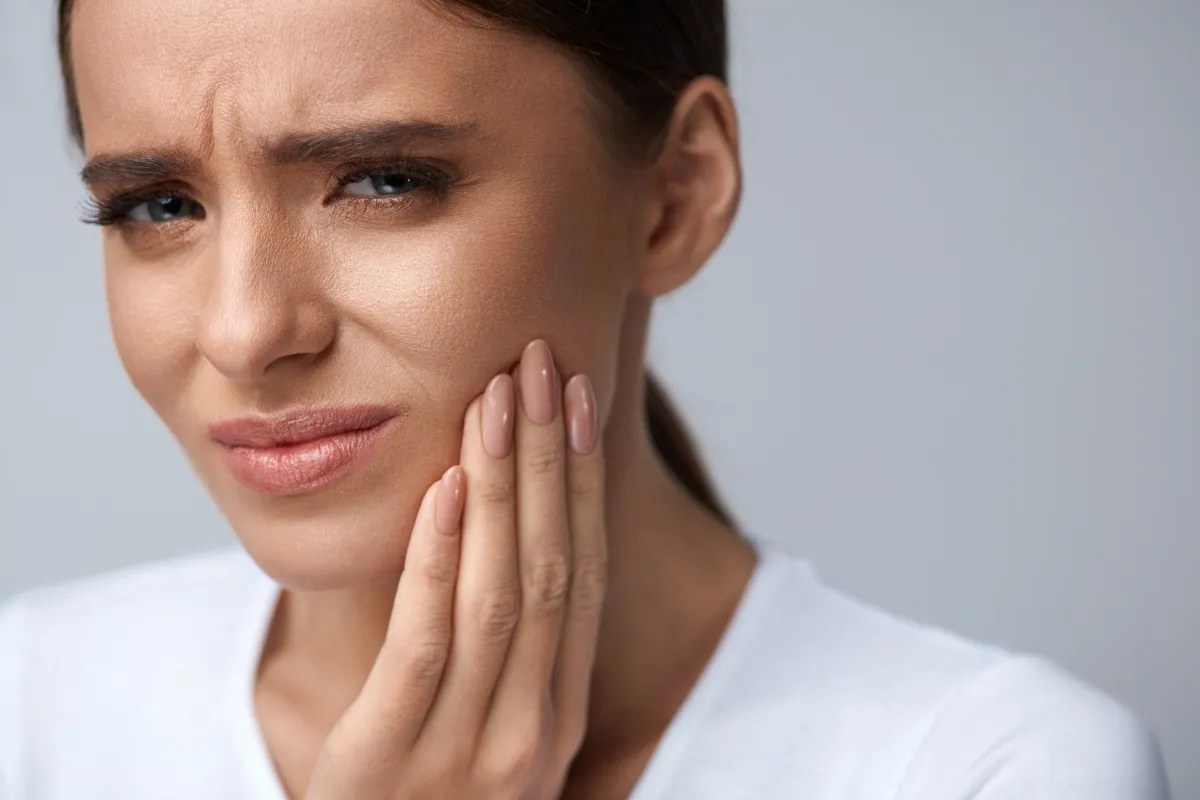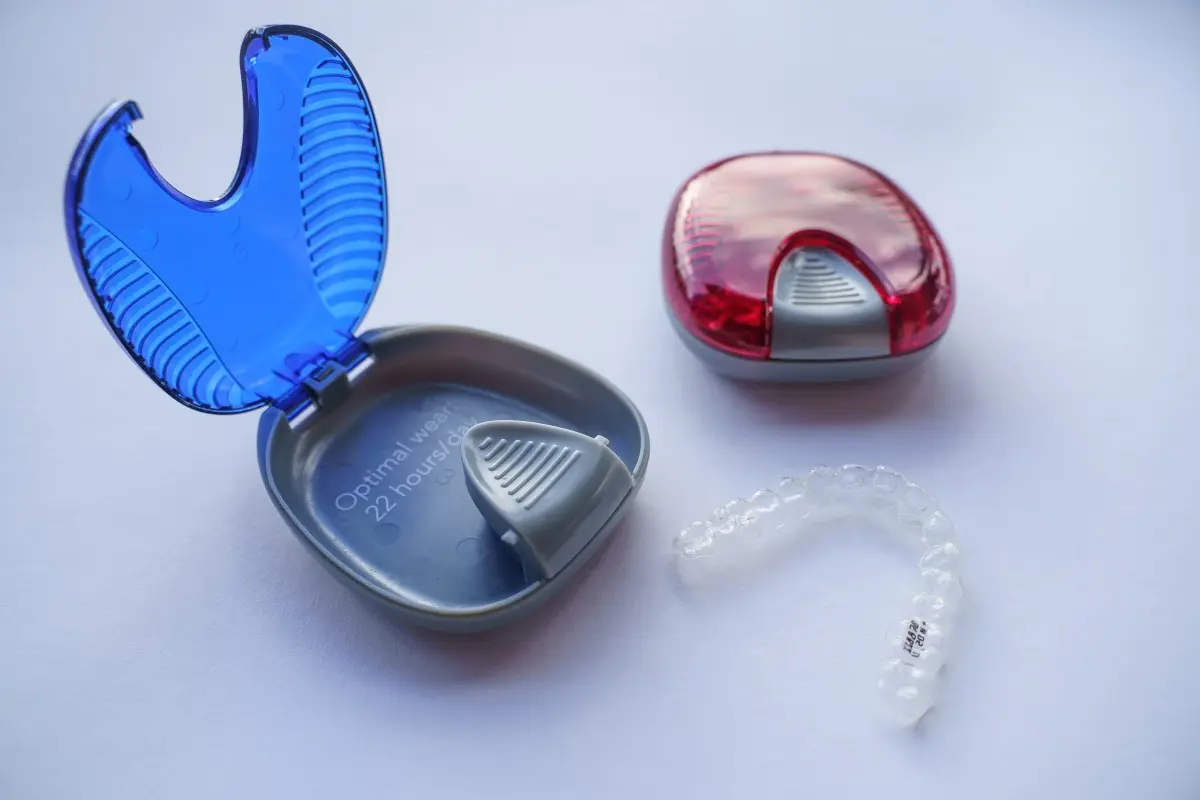
Accelerated Invisalign – Propel’s VPro5
Diamond Braces is happy to offer its patients VPro5 by Propel Invisalign, the latest tool that helps to straighten your teeth quicker.
ARE YOUR
As a clear aligner patient, you might incorrectly assume that your appliances are less injury averse than braces. Plus, you don't have to worry about having wires and brackets always attached to your teeth.
Clear aligners, like traditional metal braces and ceramic braces, can sometimes lead to minor injuries. This is an unfortunate reality.
That's important to remember that these injuries can occur with any orthodontic treatment, not just clear aligners. The risk is there, even with the most advanced options. But don’t worry, these incidents are rare and usually minor.
Mail-order aligners especially can be breakage-prone, as they’re often made with less durable thermoplastics, and often less precise fit without the help of a trusted, licensed, in-office orthodontist. However, like everything else in life, outside pressures can affect any appliance, and no appliance is 100% unbreakable.
You may have already seen our guide on reducing pain whilst wearing aligners, but we saw fit to produce a guide exploring the common causes of that pain. Keep reading for a comprehensive overview of common clear aligner cuts to watch out for.

Clear Aligners
It takes a few days for your teeth to adjust to a recently fitted aligner. During this period, your tongue may experience some friction with the edges of the new trays.
This discomfort is normal when using clear aligners, particularly if you have a tongue thrust issue. However, it typically lessens as your teeth become more accustomed to the aligner. In case you're concerned about tongue thrust and clear aligners, consult with your orthodontist for guidance on managing any discomfort or issues you may encounter during this adjustment period.
Rubbing against the tongue can lead to irritation, abrasion, and discomfort. If there's excessive friction, it may even cause the tongue to get cut. So as to discover an effective clear aligner tongue discomfort solution, it is crucial to address this issue.
Tongue cuts can be truly painful because it's tough to avoid them. Your tongue is always touching the food and drinks you need to survive.
So, some discomfort is bound to happen. These cuts can even affect moving your teeth and the health of your teeth and gums. It is essential to be careful to prevent tooth movements and other issues.
Perhaps this sounds like nothing but bad news, but the good news here is that your mouth will usually get used to these seams on its own. In the meantime, though, there are precautions and pain relief measures you can take to lessen the likelihood of clear aligner tongue irritation, such as:
If pain persists though, and you don’t think your aligner fit is naturally acclimating, let your orthodontist know. They can determine whether or not a treatment revision would be needed.

Aligners
Tongue thrust refers to the orthodontic bad habit of pressing your tongue too far forward to the point that it pushes against the teeth. This habit is far more common among infants and children than it is the adolescents and adults that are usually clear aligner candidates, with a study published in DDD estimating that nearly 3/4ths of children from grades 1-3 are guilty of it.
So why would this habit be of concern while you’re wearing removable clear aligners? For one, it obviously increases the friction bearing down on your aligners. Furthermore, it’s also been correlated with certain types of malocclusion, such as overbite and overjet.
Though children are vulnerable to having their developing bite harmed by tongue thrust, as they are by thumb sucking and pacifier overuse, the adult mouth isn’t entirely immune to malformations. If it was, we obviously wouldn’t have a sizable body of our clientele coming in!
So, to effectively reign this habit in, it’s recommended that patients who partake in tongue thrusting:
A tongue crib is a metal appliance that fits the top of your mouth. This device creates a “gate” that prevents the tongue from pressing against the roof and is designed to discourage movement.
An experienced orthodontist can effectively determine whether or not you would need to wear one before clear aligner treatment, and will want to complete it before so they aren’t conflicting.

Aligner
Clear aligners do not function as a cosmetic lip treatment. Even though it may seem like there are some changes happening, they won't directly alter your lips.
Nevertheless, these aligners may impact the appearance of your lips as they influence the contour of your mouth." This is important to keep in mind, especially when considering aligner-induced lip discomfort management. While using these appliances, your lips may appear to be somewhat larger, but it's not a direct cosmetic enhancement.
What may also be apparent while wearing your appliance is irritation on that side of your mouth. Furthermore, since clear aligners capture saliva, it may leave your lips more prone to drying and chapping.
To mitigate this effect, the aforementioned pain relief strategies that work well with the tongue will also work well with your lips. Furthermore, to deal with the discomfort that stems from lip drying and chapping, regularly drink water (which is the only drink safe to drink with aligners in) and use a quality, Gentle lip balm.

Aligners
When it comes to Invisalign or similar aligners, it's common to experience some discomfort, particularly during the initial days of wearing them. One potential issue is the edges of the aligners causing irritation to your cheeks. To minimize the chances of this happening, it's advisable to follow the previously mentioned strategies.
Additionally, you can consider carefully trimming any excess aligner material that might be causing friction against your cheeks. By taking these sensible steps, you can work towards preventing cheek cuts from aligners and ensure a more comfortable experience with Invisalign or similar dental treatments. You can do this by:
We would recommend the last option the most, as a trusted orthodontist will have the sufficient expertise needed to know how to cut your aligners thoroughly and precisely. Under any circumstances, do NOT trim or cut them with an unwieldy tool like scissors, as it’s far too easy to just cause further breakage.

Mouth Sores
If you experience gum irritation or develop canker sores while wearing your aligners, there's no need for concern.". These troubles will pass quickly. To feel better, you can try drinking cold beverages and eating soft snacks. It's best to avoid hard or crunchy foods because they can make the irritation worse.
These issues can sometimes happen when you're using alignment trays or a set of aligners for teeth straightening. Remember to keep brushing your teeth regularly to maintain good oral hygiene during the process of straightening your teeth.
You can use an ice cube to reduce inflammation by gently placing it on your cheeks. This can provide you with relief from inflammation. That's a simple and effective method for soothing discomfort.
If you follow these strategies and still feel uncomfortable, or if irritation lasts a long time even after trimming the edges, or if you have any unusual issues, be sure to contact your dentist or orthodontist as soon as possible. Regular office visits are essential when you have orthodontic appliances to ensure everything is going well.
They can provide the clarity, coherence, and skills you need to address your problems effectively. "If your persistent discomfort persists, you need not confront it alone." When you first notice long-lasting discomfort, reach out to your healthcare provider for assistance with your treatment plan and Invisalign treatment. Remember, wearing Invisalign for at least 22 hours a day is essential for the best results.